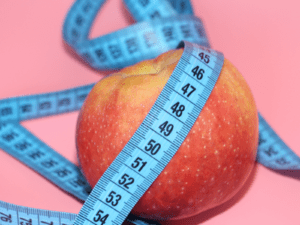Let’s Talk About Emotional Eating
Have you ever found yourself elbow-deep in a bag of chips after a hard day, wondering, What just happened? You’re not alone. Emotional eating is one of those sneaky habits that feels comforting in the moment but can leave you feeling worse afterward. It’s not just about the food—it’s about the emotions driving the behavior.
And here’s the thing: emotional eating isn’t something to be ashamed of. It’s something to understand.
What is Emotional Eating?
In a nutshell, emotional eating is using food to deal with feelings instead of hunger. Stress, sadness, boredom, or even happiness can trigger it. It’s that “I deserve this” treat after a tough day or the cookie binge when life feels overwhelming.
The problem? Food doesn’t solve emotions—it just distracts you from them for a while. And when the food is gone, the emotions are still there (and sometimes with a side of guilt).
Why We Turn to Food When We’re Stressed
- Your Body’s Stress Response
Stress isn’t just in your head—it’s in your body. When you’re feeling frazzled, your brain releases cortisol, which can make you crave sugar, carbs, and fat. Why? Because your body thinks you’re in survival mode and needs quick energy. The problem is, that “danger” might just be a tight deadline or an awkward conversation—not a life-or-death situation. - Comfort Food Conditioning
For many of us, food has been a source of comfort since childhood. Maybe you got a treat when you were sad, or celebrations always revolved around food. Over time, we learn to associate eating with feeling better. - The Dopamine Hit
High-sugar and high-fat foods give your brain a little dopamine boost—the same feel-good chemical released when you’re happy or excited. It’s no wonder a pint of ice cream feels like a solution (spoiler: it’s not).
What Emotional Eating Costs You
Let’s be real—emotional eating can feel like a quick fix, but it often leaves you feeling worse. The guilt, the frustration with yourself, the cycle of promising to “do better tomorrow”… it’s exhausting. And it doesn’t actually address what you’re feeling in the first place.
But here’s the good news: you can break free from this cycle.
How to Start Changing Your Relationship with Food
- Pause Before You Eat
The next time you feel that pull toward the pantry, take a breath. Ask yourself, Am I actually hungry? Or is something else going on here? If it’s not hunger, give yourself permission to sit with the feeling instead of stuffing it down with food. - Get Curious, Not Judgmental
Emotional eating is a habit—not a character flaw. Instead of beating yourself up, try getting curious. What triggered the urge? What’s going on in your life right now? The more you understand your patterns, the more power you have to change them. - Build Your Coping Toolbox
Food might be your go-to coping tool, but it doesn’t have to be your only one. Try experimenting with other ways to handle stress, like:- Writing down what’s bothering you.
- Calling a friend and venting (or just chatting).
- Taking a quick walk or even just stepping outside for fresh air.
- Practicing deep breathing for a minute or two.
- Be Kind to Yourself
If you slip into emotional eating, it’s not the end of the world. This isn’t about being perfect—it’s about making progress. Every time you choose to pause, reflect, or try something different, you’re building a new, healthier habit.
Final Thoughts
Emotional eating doesn’t make you weak or broken—it makes you human. It’s simply your brain and body’s way of trying to protect you in stressful times. But food isn’t the answer to your feelings—it’s a message from your emotions that something deeper needs attention.
The good news? You don’t have to fix this overnight. Start small. Get curious. And remind yourself that change happens one mindful step at a time.
Key Takeaways
- Emotional eating is common—you’re not alone.
- It’s not about food; it’s about what you’re feeling.
- Small steps can lead to big changes.
Now, go take that first step!








